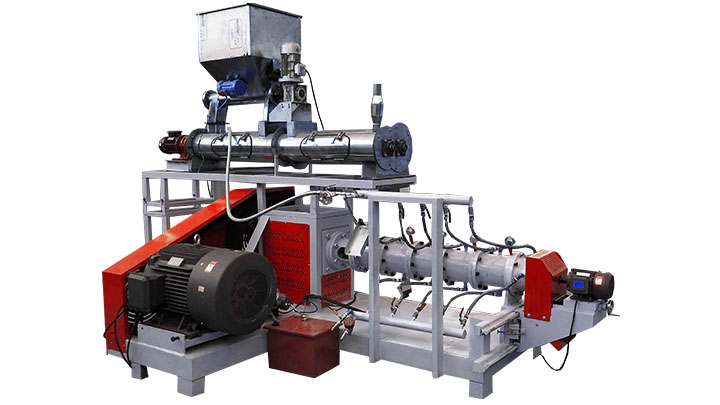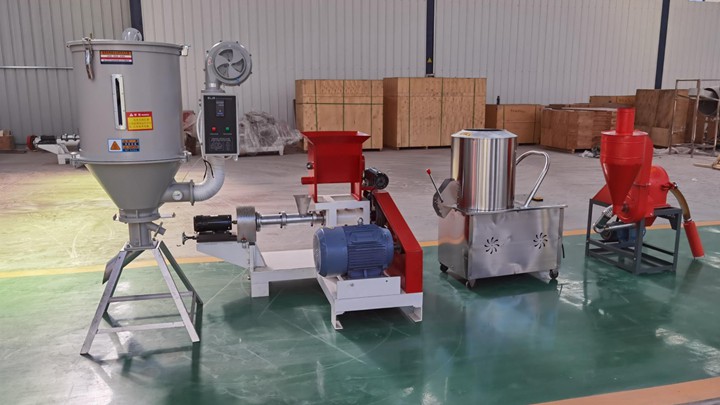.jpg)
Fish feed extrusion is a way to make fish food pellets that are good for fish and easy to digest. This method changes a mix of feed ingredients into dough, which then goes through a machine called an extruder.

Clextral extrusion systems efficiently produce high-energy feed with a precise balance of proteins, oils and carbohydrates, processed for optimum digestibility. Extruded feeds are produced to match fish feeding habits (floating, neutral buoyancy or sinking) to energize feeding and reduce waste.
.jpg)
Bühler’s aqua feed production solutions include complete plant design and installation for producing a full range of fish feed pellets, including floating, sinking and slow sinking feed for shrimp, salmon, trout, seawater fish and more.
.jpg)
The floating fish feed machine is to convert soybean meal, rice bran, fish meal, bone meal, corn meal, flour, etc. into fish feed pellets with various shapes by heating and extruding. It has a capacity of 40-350kg/h, even bigger.
.jpg)
Extrusion process is an efficient continuous process, which uniquely combines several unit operations viz.: mixing, shearing, heating, pumping, forming, and sizing. Food extruders are classified thermally as forming or cooking and geometrically as single or twin screws.

Other than the dry type, the wet type fish feed extruder machine is equipped with a boiler that can add vapor constantly into the chamber when extruding feed ingredients, which makes it widely applied to produce floating fish feed pellets for fish farms, aquaculture, and even poultry farms.
.jpg)
Apr 1, 2004 · In an extrusion process with high moisture over 35 percent, temperatures exceeding 140 degrees C, and high pressure and shear, globular proteins like soybean meal and wheat gluten can be dispersed to form a continuous melt.